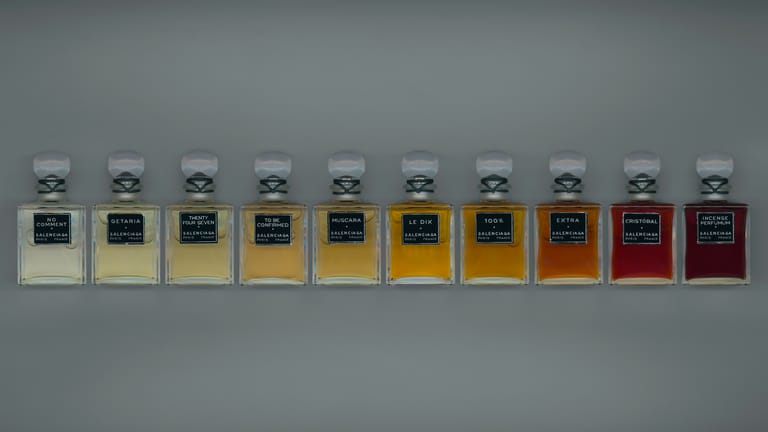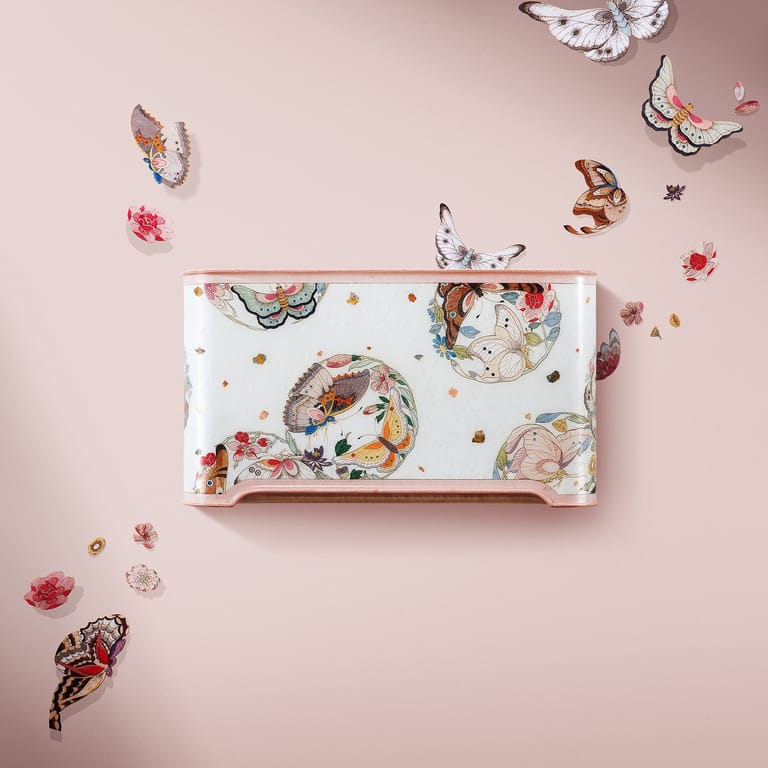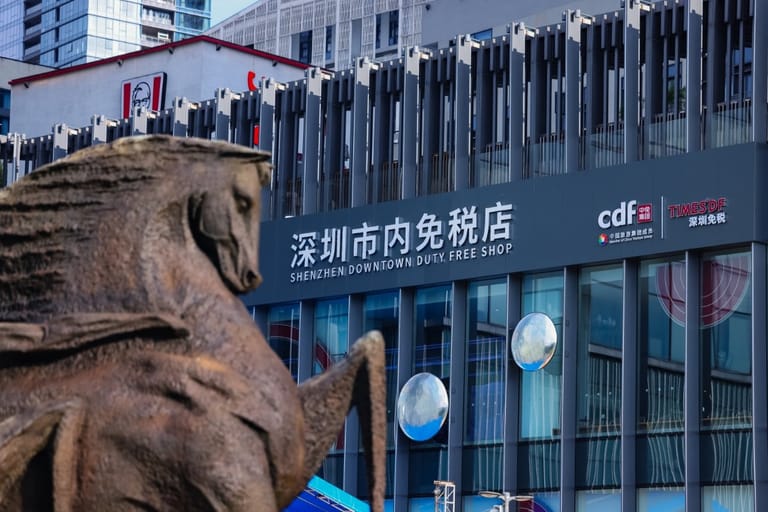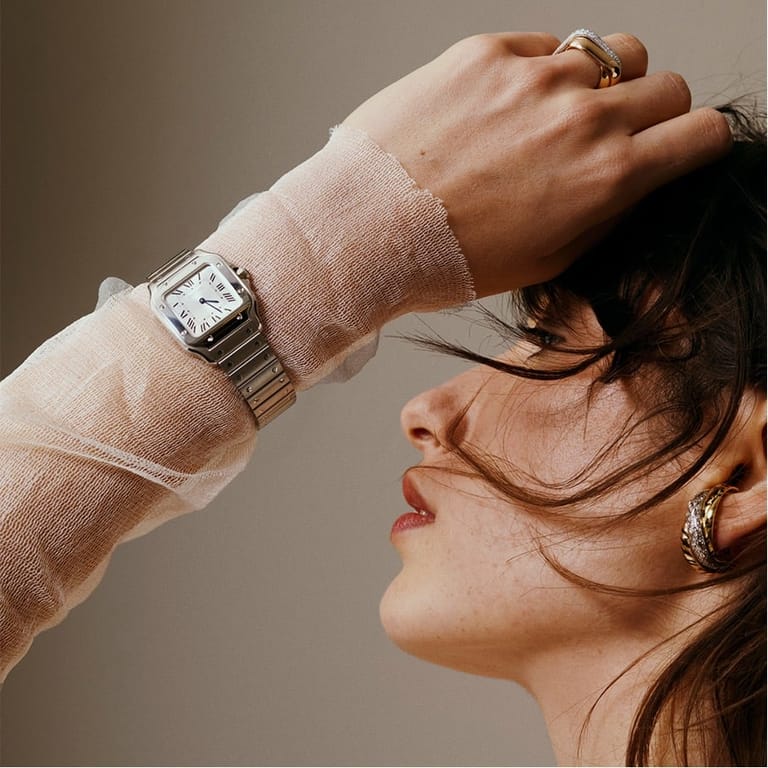Laopu Gold’s High-End Bet: Winning in a Volatile Market
By
Wenzhuo Wu

Published on
April 3, 2025

Jingzhi Curates is your daily compass for navigating the dynamic intersections of business, culture, and society. Each installment distills the day’s most pressing issues into thoughtful, actionable insights—perfect for leaders, innovators, and the intellectually curious. Whether a game-changing shift in global markets, a breakthrough in AI, or a cultural trend redefining consumer behavior, Jingzhi Curates delivers clarity in complexity.
In an era where traditional gold jewelry brands struggle with declining desirability and the rise of more affordable alternatives, Laopu Gold has defied industry trends to achieve explosive growth.
On March 31, 2025, Laopu Gold reported its full-year 2024 earnings, reinforcing its status as an industry outlier. The company achieved approximately RMB 98 billion ($13.48 billion) in sales, with revenue reaching RMB 85.1 billion ($11.71 billion), a year-on-year increase of 167.5 percent. These stellar results come against the backdrop of a 24.69 percent decline in China’s overall gold jewelry consumption in 2024, making Laopu Gold’s countertrend growth all the more remarkable.
Within a year of its IPO, the company’s market capitalization surged from HKD 5-6 billion to an astonishing HKD 135 billion ($17.35 billion), surpassing long-time industry leader Chow Tai Fook.
Despite Laopu Gold’s impressive financial performance, analysts remain measured in their outlook. UBS, while acknowledging the company’s strong year-to-date sales, maintained a Neutral rating with a target price raised from HKD 520 to HKD 900, suggesting that the market has already priced in its robust growth trajectory.
By transforming a commodity-driven market into an aspirational one, the brand has strategically positioned itself as a high-end gold brand while maintaining an edge in affordability within the luxury space.

Luxury Amidst Market Downturn
Gold jewelry has historically been caught in a paradox: while gold itself remains a safe-haven asset, consumer interest in gold accessories has wavered. Many legacy brands have seen sales decline as younger consumers shift towards contemporary designs, alternative materials, and more price-sensitive choices. Laopu Gold, however, has rewritten the narrative by embracing a luxury pricing strategy and emphasizing exclusivity through traditional craftsmanship.
Unlike conventional brands that price jewelry based on gold’s daily market value, Laopu Gold employs a fixed-price strategy akin to luxury fashion houses, with annual price increases baked into its brand positioning. This approach has helped stabilize its gross profit margin at an impressive 41.2 percent. Its signature “Chinese heritage gold”—which integrates traditional cultural motifs with intricate craftsmanship—has further distinguished it from mainstream competitors, with an average ticket price of RMB 20,000 ($2,752).
Product Innovation and Market Leadership
Laopu Gold’s ability to consistently innovate has been a defining factor in its ascent. With a founder-led R&D team, the company has amassed nearly 2,000 original designs, 249 domestic patents, 228 international patents, and over 1,300 registered copyrights. By pioneering the “Chinese heritage gold” concept and introducing products such as “solid gold embedded with diamonds” and “gold-bodied enamel,” the brand has set the pace for an industry historically slow to evolve.

The brand’s premium positioning has been reinforced by its strategic retail presence. With 36 self-operated stores across 15 cities—anchored in SKP and MixC malls—Laopu Gold has secured its place in China’s most prestigious shopping destinations. This network contributed to RMB 85.35 billion in offline sales in 2024, with industry data ranking it first in both average store revenue and sales per square meter in mainland China.
Digital Strategy and Consumer Loyalty
Laopu Gold has successfully leveraged digital platforms to enhance its offline presence. During the 2024 “Double 11” shopping festival, its flagship online store topped the jewelry category with sales of RMB 12.6 billion ($1.72 billion). While e-commerce revenue still accounts for a modest 12.4 percent of total sales, its role in sustaining consumer engagement and reinforcing brand prestige cannot be overlooked.

The company’s rapidly expanding loyalty program underscores its growing consumer base. By the end of 2024, Laopu Gold had 350,000 registered members—an increase of 150,000 from the previous year—indicating strong customer retention and high repeat purchase rates.
The Real Test: Beyond Gold Prices
Despite its meteoric rise, the real challenge for Laopu Gold lies in sustaining momentum beyond favorable commodity prices. While its brand strength has been reinforced by high gold valuations, a price correction in the bullion market could test its ability to maintain premium pricing and consumer appeal.
Luxury brands with enduring value—such as Hermès in leather goods—derive their pricing power from craftsmanship, heritage, and brand equity rather than raw material costs. For Laopu Gold to cement its position in the luxury sector, it must ensure that consumer perception of its products extends beyond the intrinsic value of gold itself.
If the company can continue to innovate, sustain its high-end positioning, and cultivate long-term brand desirability, it could reshape China’s gold jewelry market. If not, its success may prove cyclical, tied more to gold price fluctuations than to a fundamental shift in consumer behavior. Either way, Laopu Gold’s ascent serves as a compelling case study in the power of strategic brand elevation within a highly traditional industry.












